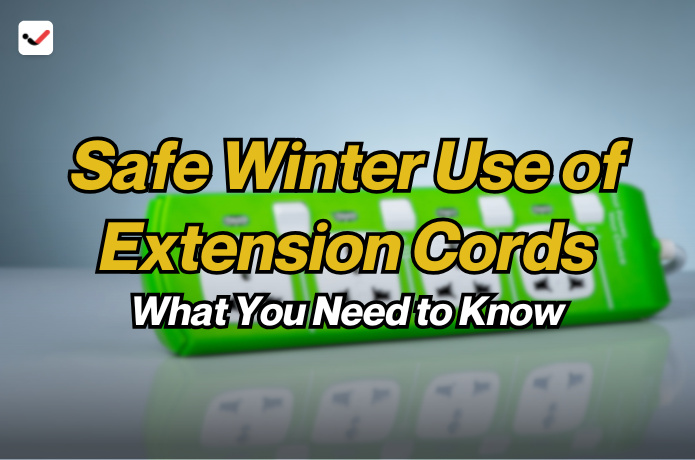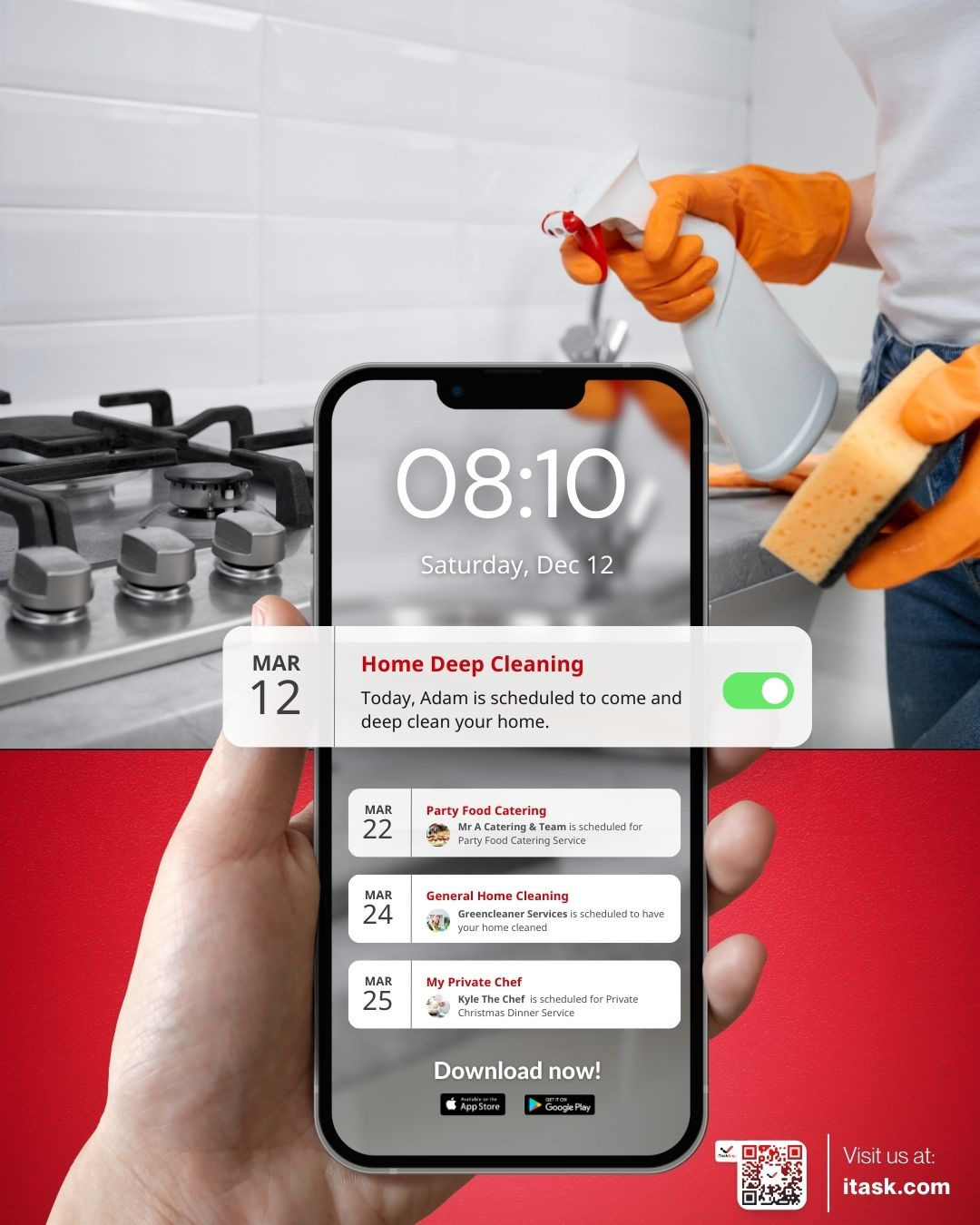Safe Winter Use of Extension Cords: What You Need to Know
Safe Winter Use of Extension Cords: What You Need to Know

As winter rolls in, many homeowners find themselves relying on extension cords to power outdoor lights, space heaters, and other appliances. However, the cold weather brings with it unique challenges when it comes to using extension cords safely. While extension cords are a convenient way to extend power to places where outlets are scarce, improper use, especially during the winter months, can lead to serious risks, including electrical shocks, fires, and equipment damage. Ensuring that you are using extension cords correctly is essential to protect your home and loved ones during the colder months.
Understanding how to safely use extension cords in winter weather conditions is important for every homeowner. As temperatures drop, the risk of damage to the cords increases, and snow, ice, and wet conditions can create hazardous situations. This article will cover the critical steps to safely use extension cords during winter and help you avoid accidents while ensuring your devices continue to work properly.
1. Choose the Right Extension Cord for Winter Use
One of the most important aspects of using extension cords safely in the winter is selecting the right type for the job. Not all extension cords are designed to handle cold temperatures, and using the wrong type can lead to damage or pose a fire risk. When shopping for an extension cord to use outdoors during the winter, be sure to look for one that is labeled for outdoor use and is rated for low temperatures. Cords rated for outdoor use are built to withstand weather elements, including cold, snow, and rain.
Extension cords designed for winter use are typically made with materials that stay flexible even in cold weather. Cords that are not rated for cold temperatures can become brittle and crack, leading to exposed wires and potential electrical hazards. Always check the label for a temperature rating, and avoid using indoor extension cords outside, as they are not built to handle the harsh conditions of winter.
2. Inspect Extension Cords Before Use
Before using an extension cord during the winter, it’s essential to thoroughly inspect it for any signs of wear or damage. Over time, the insulation on extension cords can wear down, especially if they’ve been used outdoors in harsh weather. Look for any exposed wires, cuts, frays, or kinks in the cord. If you find any damage, it’s important to replace the cord immediately. Using a damaged extension cord can lead to electric shock, fire, or short-circuiting.
Additionally, check the plug and connectors for any rust or dirt buildup. Dirt can interfere with the proper connection, while rust can cause short circuits or fire hazards. Keep the connections clean and free from moisture to ensure safe use.
3. Keep Extension Cords Dry and Off the Ground
During the winter, moisture can accumulate quickly, whether from snow, rain, or wet surfaces. When using extension cords outdoors, it’s essential to keep them dry and off the ground. Wet conditions increase the risk of electrical shocks and fires. Always use a cord that is rated for wet environments if you need to use it in conditions where it might get wet, such as near a puddle or in snow.
If possible, avoid running extension cords across snowy or wet ground. Use cord covers or raised platforms to keep the cord off the wet surfaces. This will help prevent the cord from becoming damaged or soaking up moisture, which could create a hazard. Make sure the plug and connectors are also kept dry and free from ice or water buildup.
4. Avoid Overloading Extension Cords
One of the most common mistakes when using extension cords in winter is overloading the cord with too many devices. Each extension cord has a specific power rating, and exceeding that rating can cause the cord to overheat, melt, or even catch fire. Be sure to check the power rating on the cord and only plug in devices that are within the safe limit. Avoid using multiple power strips or plugging too many high-wattage appliances into one extension cord.
In the winter, many people use extension cords to power outdoor lights, space heaters, and other electrical appliances. While these items are essential for comfort and safety, overloading the extension cord can lead to dangerous situations. Instead, use multiple cords if necessary, but always ensure that each cord is not exceeding its capacity.
5. Use GFCI Outlets and Outdoor Rated Surge Protectors
Another important safety measure when using extension cords in winter is to make sure your outlets and connections are equipped with the proper safety features. A Ground Fault Circuit Interrupter (GFCI) outlet is designed to cut off power if there is any risk of electric shock. This is especially important when using extension cords outdoors in winter, as water and ice can create a dangerous environment for electrical equipment.
Additionally, consider using surge protectors rated for outdoor use. These devices protect your appliances from power surges, which can be common during winter storms. Lightning, heavy winds, and ice buildup on power lines can cause electrical surges, which can damage sensitive equipment. Using a surge protector can help keep your devices safe and extend their lifespan.
6. Avoid daisy-chaining Extension Cords
It’s tempting to connect multiple extension cords together to reach a farther distance, but this practice, known as daisy-chaining, can be extremely dangerous. When you connect multiple cords, the electrical load is distributed across more wires than it is designed to handle. This increases the risk of overheating and fires. Instead of connecting several extension cords, use a single cord that is long enough to reach the desired location.
If you find that you need a longer cord, it’s better to buy one that suits your needs rather than connecting multiple cords together. Extension cords come in various lengths, so there is usually a suitable option available for your specific situation.
7. Store Extension Cords Properly After Use
When the winter season is over, it’s important to store your extension cords properly to prevent damage and prolong their lifespan. Avoid leaving extension cords outside or coiled up in damp, dark areas. Instead, store them in a dry, cool location away from extreme temperatures or moisture. Make sure the cord is untangled and coiled loosely to avoid kinks or cracks.
If you need to store an extension cord for long periods, consider wrapping it around a storage reel or in large loops to prevent damage. Also, be sure to inspect the cord again before storing it to check for any wear or damage that may have occurred during use.
8. Use Extension Cords Only as a Temporary Solution
Finally, it’s important to remember that extension cords are meant for temporary use only. If you find that you are regularly relying on extension cords for outdoor appliances or lighting during the winter, it may be a good idea to invest in a more permanent solution, such as additional outdoor outlets. Extension cords should not be used as a long-term solution for powering devices.
If you frequently need outdoor power for lights, heaters, or other devices, consider installing additional outdoor outlets that can be safely used year-round. This will reduce the risks associated with extension cords and improve the overall safety of your home.
Extension cords are a convenient tool for powering devices during the winter, but they must be used with caution to ensure safety. By selecting the right type of extension cord, inspecting it before use, keeping it dry and off the ground, and following all necessary safety precautions, you can reduce the risks of fire, electric shock, and damage to your equipment. By using these tips, you can enjoy a safe and warm winter without worrying about the dangers of improper extension cord use.

